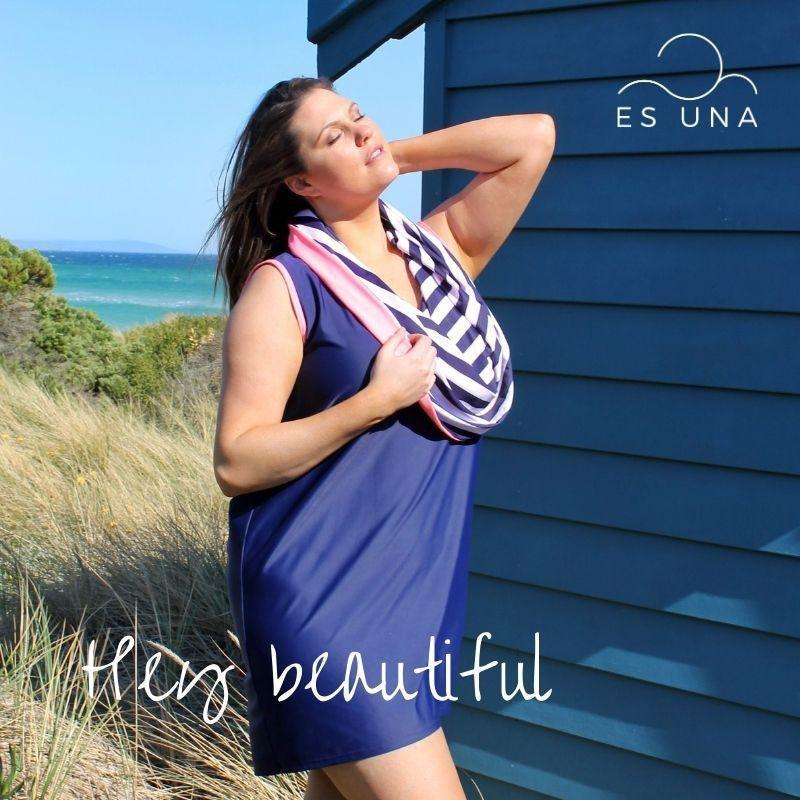Hey beautiful!

When Es Una worked with Amelia Stubbs, curve model and body confidence advocate, we knew we were working with a woman who embraced her beauty. She was confident and enthusiastic. She showcased her body and she knew how to wear each of our garments to its best effect.
Who defines the "epitome of beauty"? Who deserves the right to decide if someone’s face is ideal or if someone’s body is perfectly proportionate?
The concept of beauty exists in all cultures and all countries. And while every society has beauty stereotypes, we know that not everyone agrees with it. And if not everyone accepts these societal standards of beauty, how can we definitively say that there is one acceptable definition of beauty?
The reality is that while feminine beauty has not changed, its perception and definition has never stopped developing. Throughout history, we know that the description of the “perfect” body type has continued to reinvent itself as cultures grow.
The idealised woman of just a few centuries ago was well-nourished; they had curvaceous pear-shaped bodies with large breasts, representing a figure with great child-bearing potential. In Ancient Greece, artists portrayed the perfect woman as having full hips and a stomach. Interesting how women obsess about this stomach fat today, when the most famous painters and sculptors in history celebrated every curve.
However, societal views of the woman’s body would eventually change as accentuating the curves by cinching the waist became the new norm. Corsets were used to tighten the waist and emphasise the breasts. But like a switch and the passing of a generation, voluptuous was no longer ideal but the tall and slim woman was. And by the 20th century, a slender and athletic body was the goal.
Before we accept that our faces and bodies are less than perfect, remember that the ideals of ‘beauty’ and ‘perfection’ are fleeting, likely to change and reinvent itself from one generation or trend to the next. One moment there is a defined bust-to-ratio for the ideal body and a ‘golden ratio’ for a beautiful face; the next, someone is arguing otherwise.
What we see, and our experiences, help mould our thoughts. We are constantly bombarded by images that can potentially change how we perceive beauty standards. But while we are quick to pick up the messaging and pictures, it’s entirely our choice to accept them as truth.
Ultimately, we have the power to define beauty. No one else can tell us what we find attractive or aesthetically supreme. And if no one can make that decision for us, we shouldn’t force our beauty ideals on others.
Today, are we more willing to explore the entire spectrum of beauty, rejecting behaviour that shames ‘flaws’? We hope so. Let’s celebrate diversity, uniqueness, and personal choices. The concept of beauty has evolved because fortunately, society has also changed.
At Es Una, we’re tired of women covering up at the beach because they’re worried about what people will say about their bodies. They worry about people laughing at their stomachs, judging their full hips, and criticising their weight. That’s why we've taken the old concept of rash vests and made them into the ‘perfect fit' to complement your style and conquer body confidence. We've taken an approach based on a modest swimsuit and introduced a swim dress, swim top and swim bottoms, so that you can do summer your way and not anyone else's.